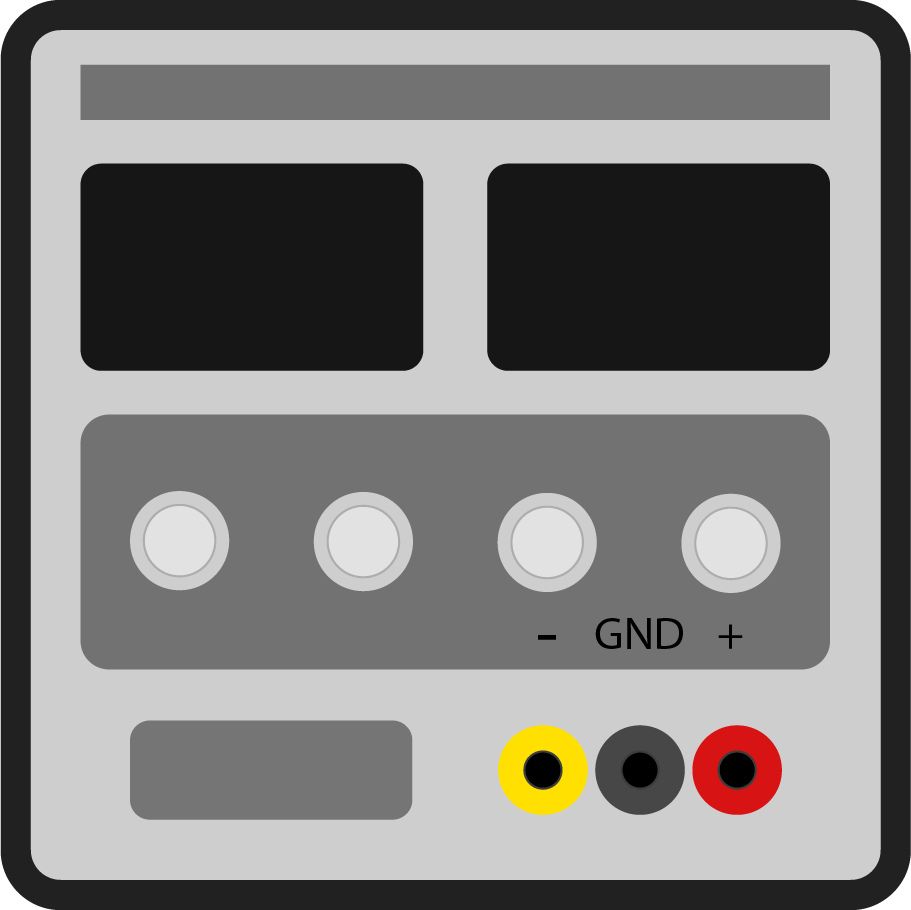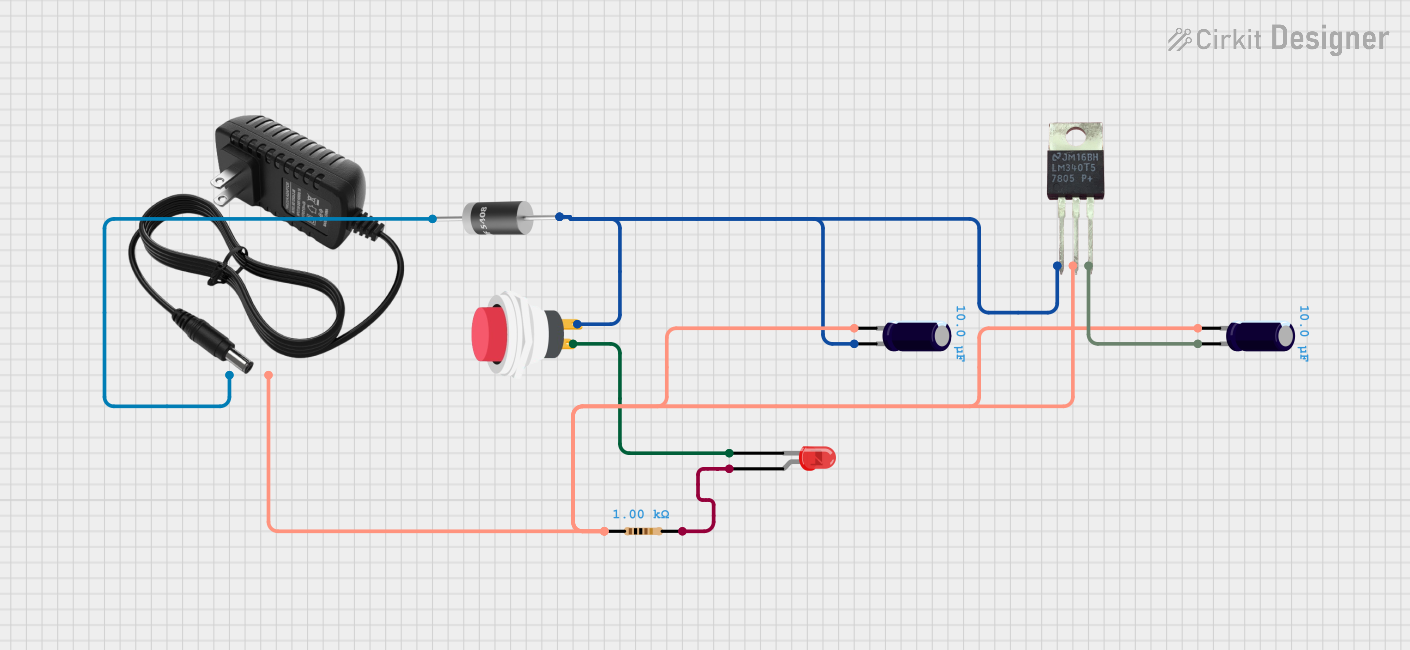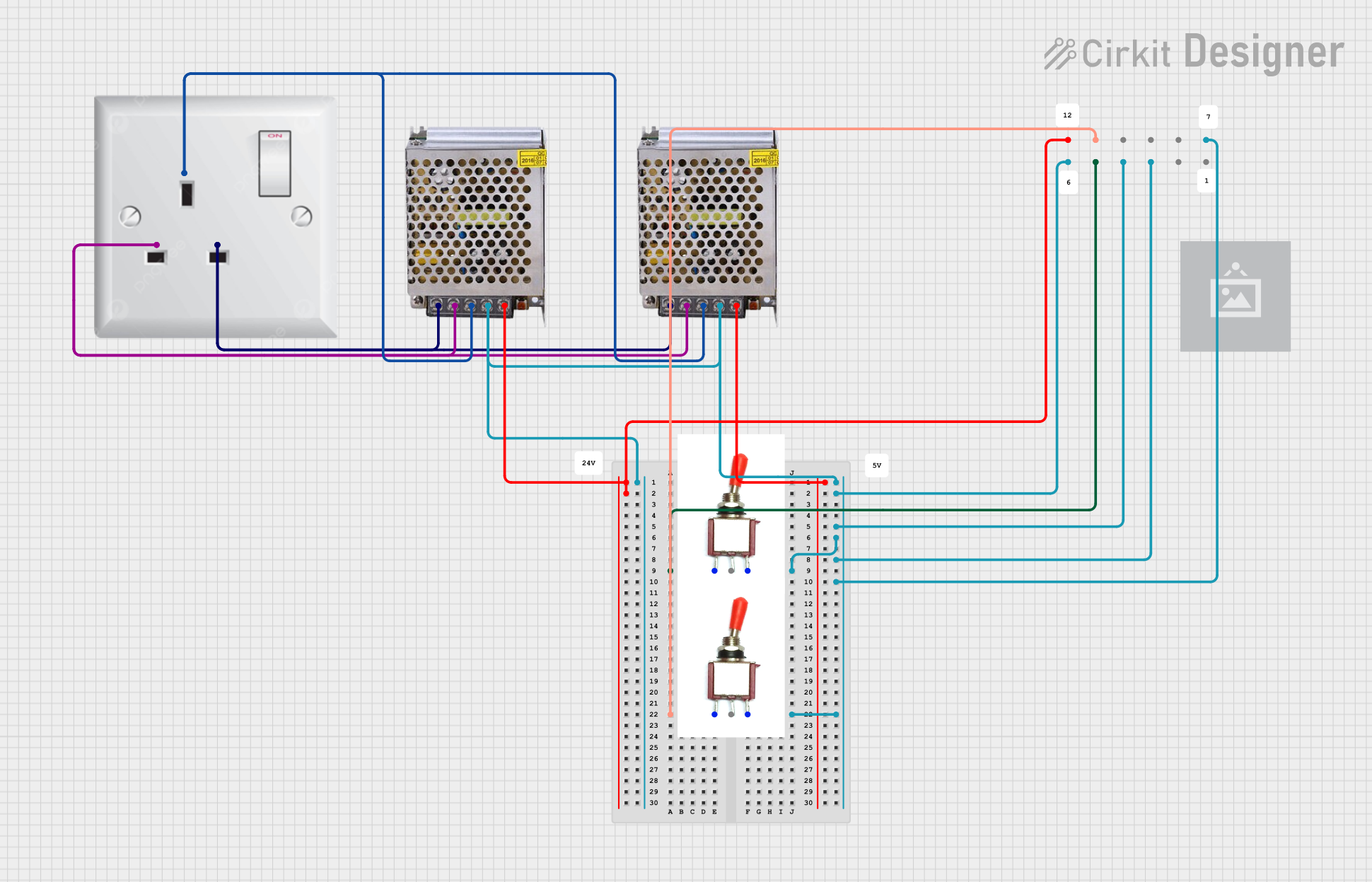
How to Use 15V Power Supply: Examples, Pinouts, and Specs

 Design with 15V Power Supply in Cirkit Designer
Design with 15V Power Supply in Cirkit DesignerIntroduction
A 15V power supply is a device that converts electrical energy from a source, such as an AC mains outlet or a DC input, into a stable 15V DC output. It is commonly used to power electronic circuits, devices, and components that require a consistent 15V supply for proper operation. These power supplies are available in various forms, including linear regulators, switching power supplies, and bench power supplies.
Explore Projects Built with 15V Power Supply

 Open Project in Cirkit Designer
Open Project in Cirkit Designer
 Open Project in Cirkit Designer
Open Project in Cirkit Designer
 Open Project in Cirkit Designer
Open Project in Cirkit Designer
 Open Project in Cirkit Designer
Open Project in Cirkit DesignerExplore Projects Built with 15V Power Supply

 Open Project in Cirkit Designer
Open Project in Cirkit Designer
 Open Project in Cirkit Designer
Open Project in Cirkit Designer
 Open Project in Cirkit Designer
Open Project in Cirkit Designer
 Open Project in Cirkit Designer
Open Project in Cirkit DesignerCommon Applications and Use Cases
- Powering operational amplifiers, sensors, and other analog circuits.
- Supplying voltage to microcontrollers and development boards (with proper regulation).
- Driving small motors, relays, and actuators.
- Laboratory and prototyping applications.
- Industrial control systems and automation equipment.
Technical Specifications
Below are the key technical details for a typical 15V power supply. Specifications may vary depending on the specific model or manufacturer.
General Specifications
| Parameter | Value |
|---|---|
| Output Voltage | 15V DC |
| Input Voltage Range | 100-240V AC (for AC models) |
| Output Current | 1A to 5A (varies by model) |
| Power Rating | 15W to 75W (varies by model) |
| Regulation Type | Linear or Switching |
| Efficiency | Up to 90% (switching models) |
| Ripple and Noise | <50mV (typical) |
| Operating Temperature | -10°C to 50°C |
| Protection Features | Overvoltage, Overcurrent, |
| Short Circuit Protection |
Pin Configuration and Descriptions
For a typical 15V DC power supply with a barrel jack or terminal block output:
Barrel Jack Connector
| Pin Name | Description |
|---|---|
| Center Pin | +15V DC (Positive Output) |
| Outer Ring | Ground (Negative Output) |
Terminal Block Connector
| Pin Name | Description |
|---|---|
| V+ | +15V DC (Positive Output) |
| V- | Ground (Negative Output) |
Usage Instructions
How to Use the 15V Power Supply in a Circuit
- Verify Input Voltage: Ensure the input voltage matches the power supply's requirements (e.g., 100-240V AC for AC models or a specific DC input range for DC models).
- Connect the Output:
- For a barrel jack connector, plug the jack into the corresponding socket on your device.
- For a terminal block, connect the V+ terminal to the positive input of your circuit and the V- terminal to the ground.
- Power On: Switch on the power supply and verify the output voltage using a multimeter before connecting sensitive components.
- Load Connection: Connect the power supply to your circuit or device, ensuring the load does not exceed the rated current.
Important Considerations and Best Practices
- Check Polarity: Always verify the polarity of the connections to avoid damaging your circuit.
- Avoid Overloading: Ensure the total current draw of your circuit does not exceed the power supply's maximum current rating.
- Use Proper Heat Dissipation: For high-power applications, ensure adequate ventilation or cooling to prevent overheating.
- Add Decoupling Capacitors: Place decoupling capacitors (e.g., 0.1µF and 10µF) near sensitive components to reduce noise and ripple.
- Arduino UNO Example: If using the 15V power supply with an Arduino UNO, use a voltage regulator (e.g., LM7805) to step down the voltage to 5V.
Example: Using a 15V Power Supply with an Arduino UNO
/* Example code to blink an LED using Arduino UNO powered by a 15V power supply.
Ensure a 15V-to-5V regulator (e.g., LM7805) is used to safely power the Arduino. */
int ledPin = 13; // Pin connected to the onboard LED
void setup() {
pinMode(ledPin, OUTPUT); // Set the LED pin as an output
}
void loop() {
digitalWrite(ledPin, HIGH); // Turn the LED on
delay(1000); // Wait for 1 second
digitalWrite(ledPin, LOW); // Turn the LED off
delay(1000); // Wait for 1 second
}
Troubleshooting and FAQs
Common Issues and Solutions
No Output Voltage
- Cause: Input power is not connected or switched on.
- Solution: Verify the input power source and ensure the power supply is turned on.
Output Voltage is Incorrect
- Cause: Load exceeds the power supply's current rating or incorrect settings.
- Solution: Reduce the load or check the power supply's configuration.
Overheating
- Cause: Insufficient ventilation or excessive load.
- Solution: Ensure proper airflow around the power supply and reduce the load if necessary.
Noise or Ripple in Output
- Cause: Poor filtering or high-frequency interference.
- Solution: Add decoupling capacitors near the load or use a higher-quality power supply.
FAQs
Q: Can I use a 15V power supply to power a 12V device?
A: It is not recommended unless the device explicitly supports a 15V input. Overvoltage can damage the device.
Q: How do I know if my power supply is linear or switching?
A: Check the manufacturer's specifications. Linear power supplies are typically larger and heavier, while switching power supplies are more compact and efficient.
Q: Can I connect multiple devices to a single 15V power supply?
A: Yes, as long as the total current draw of all devices does not exceed the power supply's maximum current rating.
Q: Is it safe to leave the power supply on for extended periods?
A: Yes, most 15V power supplies are designed for continuous operation. However, ensure proper ventilation to prevent overheating.